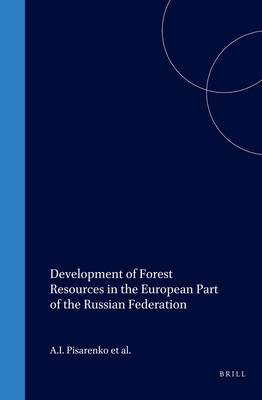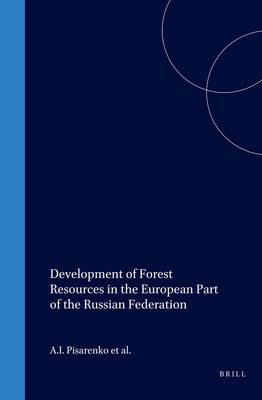
- Retrait en 2 heures
- Assortiment impressionnant
- Paiement sécurisé
- Toujours un magasin près de chez vous
- Retrait gratuit dans votre magasin Club
- 7.000.0000 titres dans notre catalogue
- Payer en toute sécurité
- Toujours un magasin près de chez vous
Development of Forest Resources in the European Part of the Russian Federation
A I Pisarenko, V V Strakhov, R Päivinen, K Kuusela, F a Dyakun, V V Sdobnova
169,45 €
+ 338 points
Description
According to the FAO's State of the world's forests 1999, the total forest area in Russia is 764 million hectares. In the international statistics the forest resource of Russia is treated as one unit. One quarter of this vast forest area, approximately as much forest as all the other European countries together, is in the European part of Russia, west of the Ural mountains. This report will complete the picture of European Forests given in the EFI Research Report No 1 by Kullervo Kuusela in 1994.
The first aim of this study is to describe the distribution and development of forest resources in the European part of Russia. Due to the availability of basic information, this study concentrates on lands under the authority of the Federal Forest Service of Russia, which cover more than 80% of the forest area. The emphasis is on wood resources, non-wood goods and benefits have not been discussed in detail.
Secondly, the study is an effort towards better comparability between forest statistics in Russia and other European countries. The traditions of Russian forestry and forest inventory concepts differ from the other European countries, which, in the past, have caused misinterpretations in the comparison of the statistics between the countries.
The third aim has been to 'cross check' the consistency of available information by analysing the dynamics of the forest resources from 1966 to 1993.
It is hoped that this study is able to fill in some voids in the information about Russian forest resources and that forest researchers, students, forestry experts, policy makers and the public will be able to see more clearly the historical development and future potentials of Russian forestry.
It must be kept in mind that forestry is not only wood production, it deals with nature conservation, protective and recreational functions of forests, and other non-wood benefits and services which, in some forests, play the main role. However, due to the availability of quantitative data, high potential for creating income, and its indirect effects on other types of forest utilisation, analysis of wood production is one of the basic elements in describing the potentials for utilising forest resources as a whole.
The first aim of this study is to describe the distribution and development of forest resources in the European part of Russia. Due to the availability of basic information, this study concentrates on lands under the authority of the Federal Forest Service of Russia, which cover more than 80% of the forest area. The emphasis is on wood resources, non-wood goods and benefits have not been discussed in detail.
Secondly, the study is an effort towards better comparability between forest statistics in Russia and other European countries. The traditions of Russian forestry and forest inventory concepts differ from the other European countries, which, in the past, have caused misinterpretations in the comparison of the statistics between the countries.
The third aim has been to 'cross check' the consistency of available information by analysing the dynamics of the forest resources from 1966 to 1993.
It is hoped that this study is able to fill in some voids in the information about Russian forest resources and that forest researchers, students, forestry experts, policy makers and the public will be able to see more clearly the historical development and future potentials of Russian forestry.
It must be kept in mind that forestry is not only wood production, it deals with nature conservation, protective and recreational functions of forests, and other non-wood benefits and services which, in some forests, play the main role. However, due to the availability of quantitative data, high potential for creating income, and its indirect effects on other types of forest utilisation, analysis of wood production is one of the basic elements in describing the potentials for utilising forest resources as a whole.
Spécifications
Parties prenantes
- Auteur(s) :
- Editeur:
Contenu
- Nombre de pages :
- 102
- Langue:
- Anglais
- Collection :
- Tome:
- n° 11
Caractéristiques
- EAN:
- 9789004119796
- Date de parution :
- 07-12-00
- Format:
- Livre relié
- Format numérique:
- Ongenaaid / garenloos gebonden
- Dimensions :
- 164 mm x 240 mm
- Poids :
- 371 g

Seulement chez Librairie Club
+ 338 points sur votre carte client de Librairie Club
Les avis
Nous publions uniquement les avis qui respectent les conditions requises. Consultez nos conditions pour les avis.






